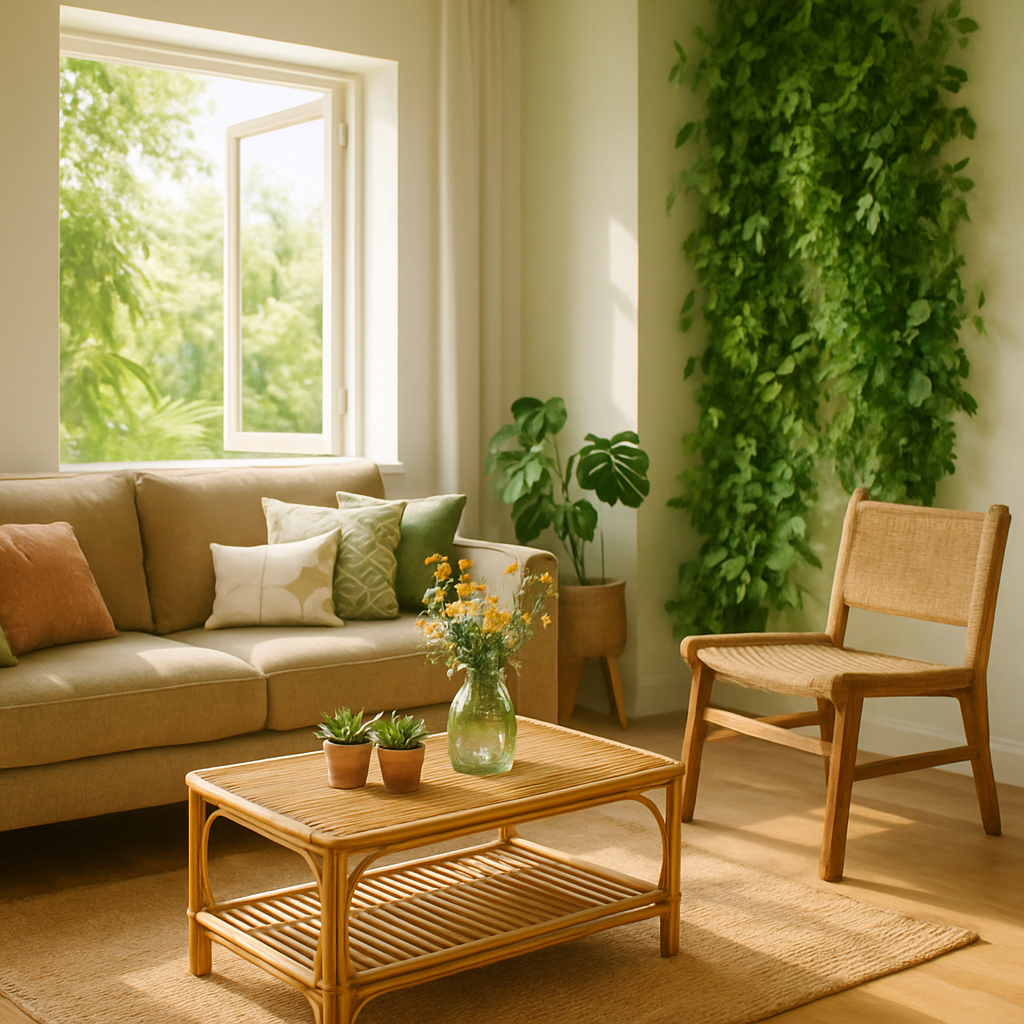
Transforming your home into a sanctuary of style and comfort is a dream many of us share, isn’t it? But have you ever thought about doing it in a way that’s not only pleasing to the eye but also gentle on our planet? Sustainable home decor is not just a trend; it’s a thoughtful way of living that can add a refreshing touch to your space while being kind to Mother Earth. And let’s face it, a home that feels good for us and the planet is a win-win.
Now, before you start thinking about hippie-dippy designs or imagining your living room turning into a forest, let me assure you: sustainable decor can be as sleek, chic, and stylish as you want it to be. It’s all about making informed choices about the materials and products you use. You’d be surprised how small changes can make a big difference.
Mixing Old with New
Repurposing and upcycling are at the heart of sustainable decor. It’s like giving a second chance to pieces that have lived a life, adding character and stories to your space. I’ve had this old wooden dining table for years, battered and bruised from countless family dinners. Instead of tossing it out, I decided to sand it down and give it a fresh coat of eco-friendly paint. It now stands proudly in the dining room, a testament to the joys of revamping rather than replacing.
But it’s not just about saving money or being thrifty. It’s about recognizing the craftsmanship in older pieces that you just don’t find in mass-produced furniture today. A well-made vintage chair can outlast a brand new one, and often with a bit of TLC, it can look just as good. When you mix these treasures with modern elements, you create a unique style that’s truly yours.
And hey, isn’t it fun to have a conversation starter? “Oh, this chair? Found it at a flea market in Portland. Just needed a bit of love,” you might say to a guest. It’s these stories that give a home its soul.
Materials that Matter
When it comes to choosing new items or materials, sustainability is about thinking long-term. Bamboo, for instance, is a fantastic option because it grows quickly and can be harvested without killing the plant. It’s sturdy, versatile, and can be used for anything from flooring to furniture. I once installed bamboo flooring in a small loft apartment I was renovating, and the transformation was incredible. The place went from drab to fab overnight, and the material was a dream to work with. Plus, it’s much kinder to the environment than traditional hardwood.
Then there’s reclaimed wood. Now, this is where things get interesting. Each piece tells a story maybe it was part of a ship or an old barn. Reclaimed wood can bring warmth and character to your home that’s hard to beat. I remember working on a project where we used reclaimed wood for shelving in a cozy reading nook. The result? It felt like a cabin in the woods, right in the middle of the city.
But what about textiles? Organic cotton, hemp, and linen are great sustainable choices. They’re grown without harmful pesticides, which means they’re better for the environment and your health. And the textures? Oh, the textures are divine soft yet sturdy, with a natural look that fits any decor style.
A word of caution, though: watch out for greenwashing. Some companies might claim their products are eco-friendly when they’re not. It’s always good to do a little digging. Look for certifications like Global Organic Textile Standard (GOTS) or Forest Stewardship Council (FSC) to ensure you’re getting the real deal.
Bringing Nature Indoors
Plants! You can’t talk about sustainable decor without mentioning plants. Not only do they boost air quality, but they also bring life and energy into your home. And let’s be honest, who doesn’t love a good fiddle leaf fig or a succulent lineup on the window sill?
I used to think I had a black thumb, killing every plant I touched. But after some trial and error, and a lot of overwatering incidents, I’ve managed to keep a few alive and thriving! The trick? Start simple. Spider plants and pothos are pretty forgiving and hard to kill (trust me on this). Once you get the hang of it, you can branch out into more exotic varieties.
Adding plants can also be a great way to break up spaces and add natural dividers. In a studio apartment, a well-placed monstera can create a sense of separation between the living and sleeping areas without putting up walls.
And don’t be afraid to play with different planters. Ceramic pots, wooden crates, or even upcycled containers can add an element of surprise and personality. I once saw a fellow carpenter use old toolboxes as planters in his workshop. It was unexpected, practical, and looked fantastic.
Small Changes with Big Impact
Sometimes it’s the little things that have the biggest impact. Switching to LED bulbs not only saves energy but also lasts longer. And dimmable LEDs can change the mood of a room with a flick of a switch.
Curtains and blinds made from natural fibers can also help regulate the temperature in your home. In the summer, they’ll keep the heat out, and in the winter, they can trap warmth inside. Plus, they add an extra layer of texture and color to your decor.
Then there’s the matter of paint. Low-VOC (volatile organic compounds) paints are a must if you’re looking to redecorate sustainably. These paints release fewer pollutants, making the air in your home healthier. Plus, they come in a wide range of colors, so you don’t have to sacrifice your style for sustainability.
And let’s not forget about the power of decluttering. The less you have, the less you need to clean, maintain, and worry about. It’s a freeing experience, and it makes the pieces you do keep stand out even more.
A New Perspective
I used to think that making my home more sustainable would mean compromising on style or comfort. But now I see it as an opportunity to be more creative and intentional with my choices. It’s about crafting a space that reflects who you are while being mindful of the impact on the environment.
There’s something deeply satisfying about creating a home that’s not only beautiful but also thoughtful. And who knows? Maybe your choices will inspire others to rethink their own spaces. After all, change often starts with a simple conversation over a cup of coffee or, in my case, while hammering away on a project in the garage.
So, next time you think about redecorating, remember that sustainable choices don’t mean giving up on aesthetics or comfort. They just mean you’re adding a little bit more love and thought into each choice. And isn’t that what home should be all about?

